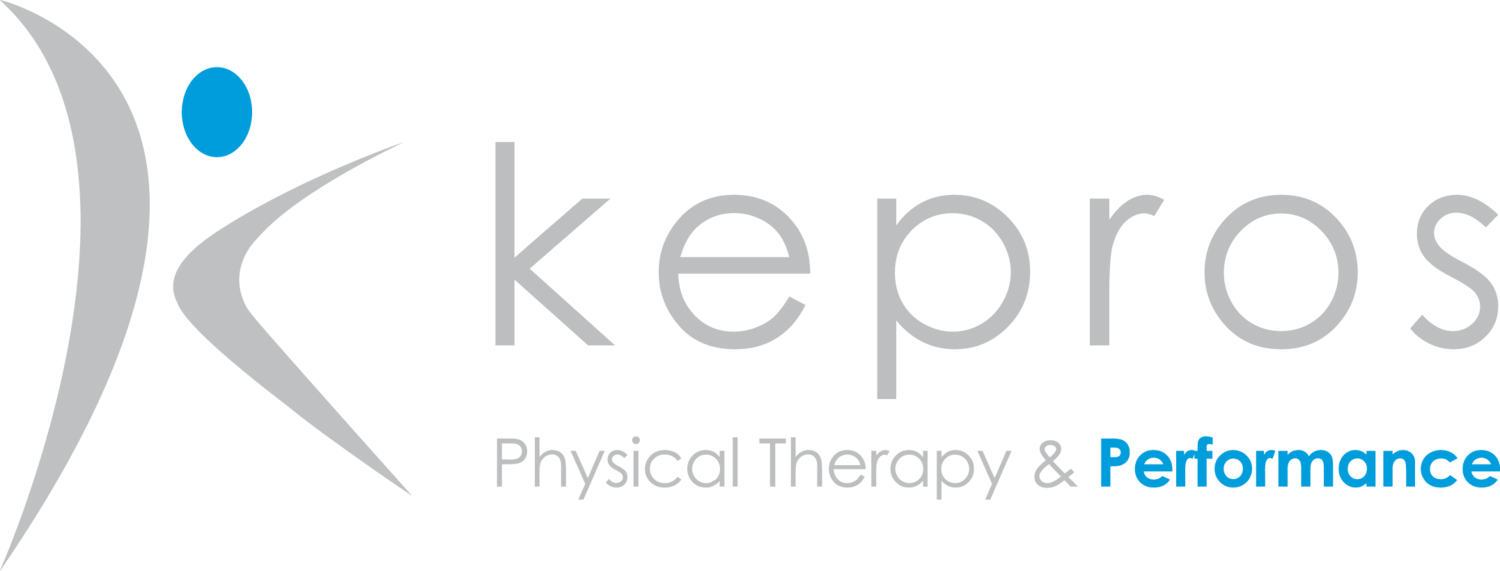What is BFR?
Blood Flow Restriction (BFR) involves the application of a tourniquet to limit blood flow to a limb while exercises or to assist in recovery from injury or surgery. Use of BFR can lead to faster recovery during rehabilitation by limiting atrophy from disuse and stimulating strength gains without the demands of heavy lifting. Due to the limitation in blood flow, muscles are working with a reduction in oxygen, which helps to turn on gene expression to build muscle strength and hypertrophy (muscle size).
Who should use BFR?
Anyone looking to…
minimize muscle atrophy after injury or surgery
gain strength without added stress to joints
even out large strength or lean muscle mass discrepancies between sides
gain muscle mass or strength to bridge the gap from recovery/rehab to heavy lifting
stimulate muscle protein synthesis to limit the effects of aging such as slower walking speed, balance, and decreasing fall risk.
How is it used?
Kepros Physical Therapy & Performance uses the Delfi Personalized Tourniquet System for BFR. It is an FDA listed medical device that meets the same safety requirements as those used in surgical procedures but has been modified for the rehabilitation setting. This state-of-the-art system instantaneously monitors blood flow to the working muscles to maintain the desired blood flow. This will take into account each individual’s limb size, side of body, tissue density, blood pressure, and tourniquet placement to ensure the most accurate pressure for each person.
There are three different ways which BFR may be used in the clinic.
Passively – This is early on after an injury or surgery to help limit muscle loss due to inactivity. Under normal conditions more than 3 lbs of lean muscle mass is lost after 7 days of bed rest. After two weeks, 30% of quad muscle size is lost. These protocols will use alternating periods of increased pressure to limit blood flow and relaxation to allow normal blood flow. This may be combined with other modalities such as electrical stimulation depending on the goal of the treatment.
Aerobically – This involved walking (easy pace) or arm/leg biking (very low level likely <3 for resistance) and may be done in intervals or continuous. This can help to improve aerobic capacity through improving muscle oxygen consumption at levels that are usually to light to cause any adaptation.
Resistance exercise – This may be with or without weight depending on the stage of rehabilitation and goals of the treatment. This is the mode of exercises that will stimulate the most strength and size gains for a given muscle as a muscle will work to right up to the point of momentary muscle failure. When the occlusion pressure is applied, people can work at 0-30% of their max lift through a rep scheme of 30-15-15-15 (weight adjusted throughout as necessary) to achieve gains normally only achieved with lifting 60-70% or greater of a max lift. Consistency here will likely lead to significant gains over the first 2-4 weeks with the goal of improving strength and size to, decrease asymmetries, and bridge the gap from muscle activation until a joint or limb is able to tolerate lifting heavy loads.
What does it feel like and what are the side effects?
In general, the use of BFR feels like an intense workout, as the goal is to get near or up to momentary muscle failure with the exercise.
As lactic acid builds up in the muscle burning and soreness will be present. At times the rest periods may be as difficult as the work periods due to this buildup.
he occluded limb will swell while the blood flow is restricted (there is no blood return to the heart from the limb)
Possibly some delayed onset muscle soreness (DOMS)
You should feel pretty well back to normal within 1-2 hours after a bout of BFR as the loads are light, which means there is no muscle breakdown.
At KPT, we have multiple providers certified in the use of pBFR, and have been able to observe amazing changes in different patients. If this is something you are interested in learning more about to see if it is appropriate for your situation, please reach out and contact us at info@keprospt.com or call our clinic at 319-200-6102.

